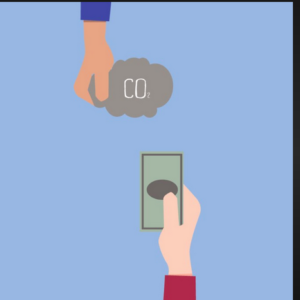The word “tariff” comes from the Arabic “ta’rif,” meaning notification. A tariff is a list of duties or charges imposed on goods coming into or being exported by a country. The tariff is imposed by a government, and it is over and above the costs of making and distributing the goods.
A “green tariff” is a duty or charge adding to the cost of the goods to level the playing field between countries that have differing commitments to reduce carbon emissions. Some countries require companies to cut carbon emissions and those efforts raise the costs of the goods. Other countries adopt lax regulations for controlling emissions, with resulting lower total costs for the goods, and higher carbon emissions. The green tariff raises the costs of importing those goods subject to lax regulations thereby eliminating the competitive disadvantage compared to those with tougher regulations.

Solving climate change requires a global effort where each country requires roughly comparable regulations on reducing emissions. The green tariff is intended to effect that goal and it is also known as “carbon border taxes,” or “carbon border adjustment mechanisms” (CBAMs).
Some further ideas to explore on Green Tariff:
Identify a green tariff in effect in your country?
How was the tariff calculated?
To what extent are the cost of goods subject to a green tariff increased in order to pass along the higher costs to customers?
Sources:
“Tariff,” Merriam-Webster Dictionary. bit.ly/3Q3GaTh
Fiona Harvey, “EU becomes first leading economy to legislate for ‘green tariff’ on imports,” The Guardian (13 Dec 2022). bit.ly/3G5bAE7
Fiona Harvey, “Green tariffs: what are they and why do they matter?,” The Guardian (13 Dec 2022). https://bit.ly/3WCfJX7


No comments yet, add your own below